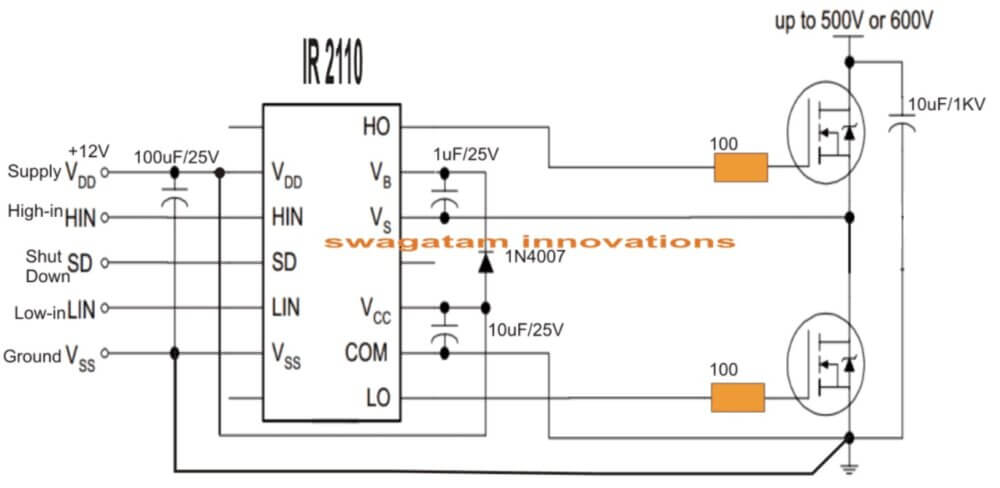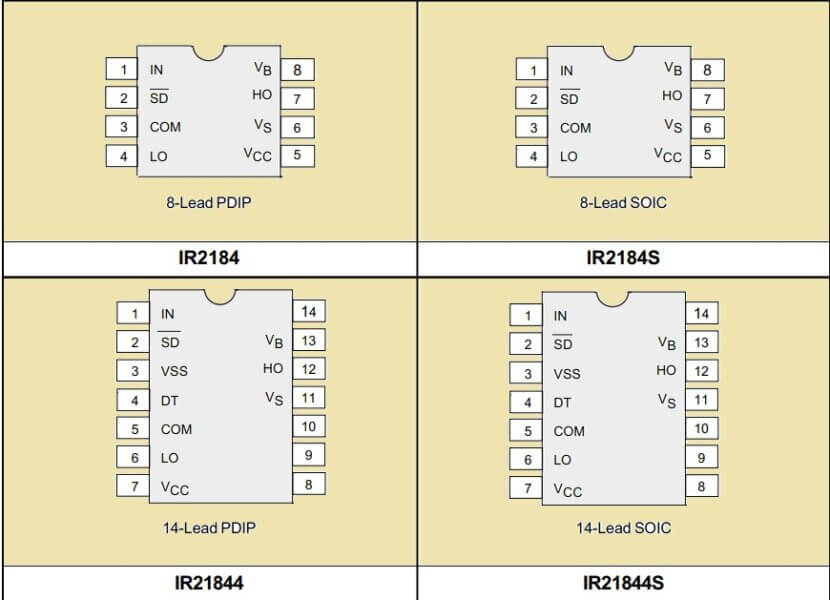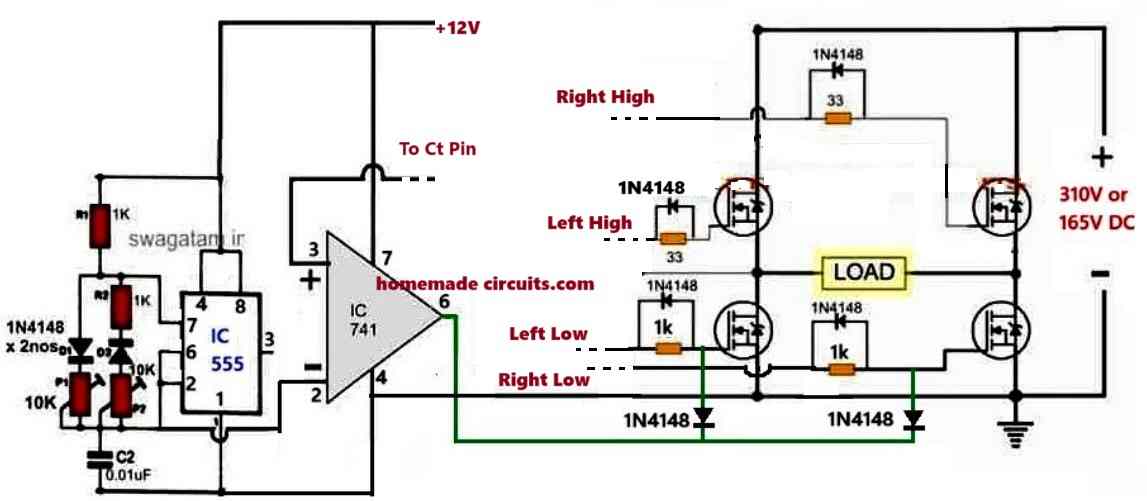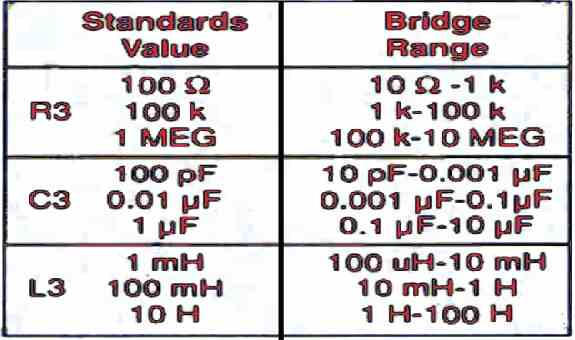Here we are going to talk deeply about snubber circuits and why we must use them with MOSFET H-bridge circuits. Because if we do not put snubber in H-bridge then that MOSFETs might blow off during switching. Specially when we drive inductive loads like transformer, motor, relay, solenoid, etc. then this thing becomes very serious. […]
Bridge
How Load Conducts in Half-Bridge Driver Circuits like IR2184 or IR2110
Many folks, especially beginners, they get fully confused when they try to use a half-bridge driver circuits using ICs like IR2184 or IR2110. They look at the datasheet diagram and start thinking, “Bro, how the load will conduct? The MOSFETs are switching one by one so how the current will pass through the load? Looks […]
IC IR2184, IR21844 Half-Bridge Driver Circuit Diagram, Datasheet, Working
In this article we are going to learn about one very useful IC called IR2184 or IR21844. This one is a smart half-bridge gate driver IC which we can use for driving both high-side and low-side MOSFETs or IGBTs, mainly when we are making full bridge inverters, or DC motor controllers, or even induction heater […]
H-Bridge Sine Wave Inverter Circuit using Arduino
In this article I will explain how we can build an Arduino-controlled H-Bridge sine wave inverter circuit using some easy parts. So this thing will basically convert DC into AC but in a way that looks like a sine wave, right? We are using an Arduino to generate PWM signals and these signals will drive […]
Convert any H-Bridge Inverter to Sine Wave H-bridge Inverter
In this post we’ll discuss how to convert any ordinary square wave H-bridge inverter into an almost pure sine wave inverter circuit. Basic Concept The idea is simple, just chop the low side MOSFET gates of the H-Bridge with reverse SPWM (Sinusoidal Pulse Width Modulation) waveform. This will force the low side 50 Hz, or […]
Wheatstone Bridge Circuits Explained with Calculations
A Wheatstone Bridge circuit is commonly used to measure resistance, inductance, capacitance, and impedance. These are made up of four parts or arms that are joined in series in a diamond like bridge configuration. These four arms carry the individual components such as resistor, inductor or capacitor connected across the fur junctions. An alternating current (AC) or […]





